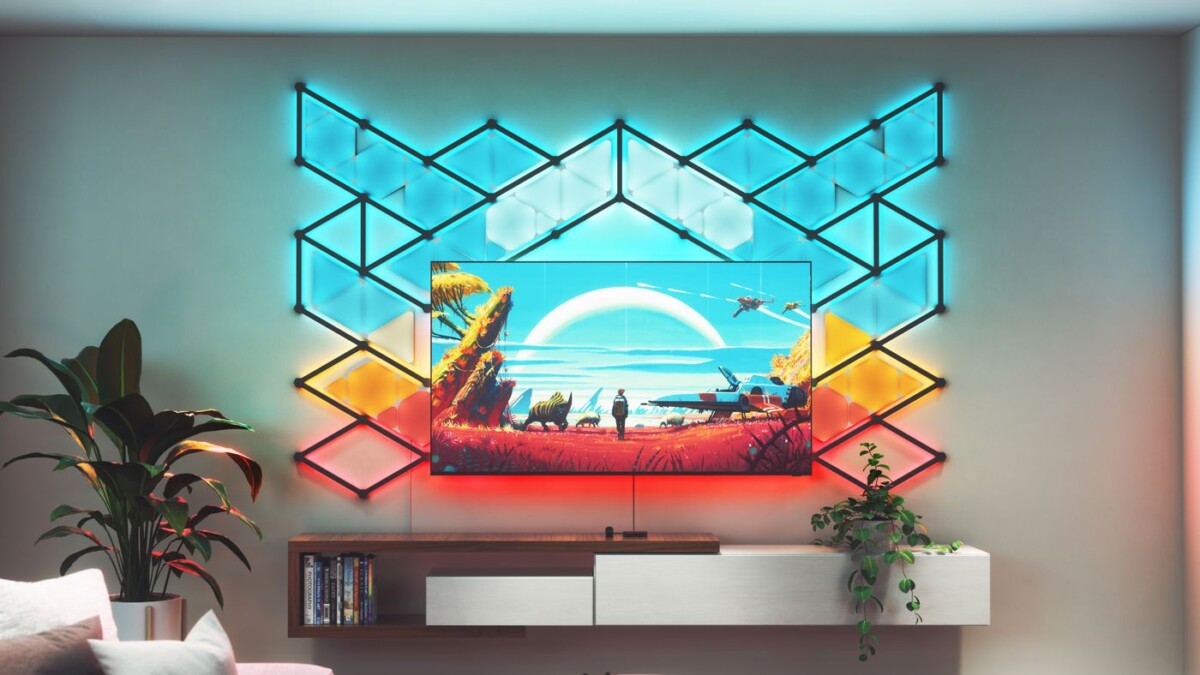The CES is a show where TV ads abound. But at a time when innovation is slowing down, how do manufacturers manage to reinvent themselves? A brief overview of Las Vegas.
Historically, the CES – or Consumer Electronic Show – is a show on which we discover a large number of novelties related to the image and to more or less consumer televisions. For years, we have discovered new screen technologies, the rollable format, the transparent screen and many others.
For this 2023 edition, the advances are timid, but they should not be neglected, since they have a major advantage over those mentioned above: they will not take 10 years to arrive in our living rooms.
How to fix the OLED problem?
In recent years, the Oled has been invited en masse into our living rooms. Our televisions are thus much more contrasted, with more vivid colors and much wider viewing angles than before. This self-emissive technology nevertheless has a defect: its lower brightness which complicates viewing in overly lit rooms. If your screen faces a bay window, we can only advise you to turn to QLED instead. Unless ?
The big trend of this CES for TV brands has been to put forward new high brightness figures. LG got the ball rolling with its new OLED G3. Thanks to MLA technology (Micro Lens Array), thousands of microlenses recover the brightness generated by the OLED in the internal reflections. This technology associated with algorithms (“Meta Booster”) allows the Korean manufacturer to announce a light peak ranging from 1800 to 2100 cd/m² on its new television.

This figure is not insignificant since it directly competes with Samsung and its QD-OLED. The quantum dot filter also makes it possible to gain luminosity on the OLED, for a luminous peak of 2000 cd/m² on the Samsung S95C unveiled this week. TCL for its part has also announced that it wants to adopt this technology in the future on some of its models.
Faced with this war of the Korean giants, the Japanese Panasonic is trying to stay in the race. Just like LG, it adopts MLA technology to improve the brightness of its televisions. Despite a 50% increase compared to the 2022 generation, this is not enough to mark the records, however, with a peak at 1500 cd / m² “onlyfor the MZ2000.
Cables, this relic of the past
Gone are the days of TV cabinets vomiting cables of all kinds. The fashion is now for the purest possible, minimalist installations, with elements preferably hung on the wall. However, this requires a bit of technique, by passing the cables either through a groove in the wall, or through a properly fixed trunking. On this point, Samsung is well ahead with its One Connect remote box – leaving only one cable from the television – or its The Frame model taking on the appearance of a painting.
LG has taken note and is therefore launching a new range during this CES 2023: the LG Signature OLED M3. His particuliarity ? A remote box… wireless. Much larger than Samsung’s, this box can broadcast content up to 4K 120 Hz on the screen without any wires. However, many questions still remain unanswered on this subject.

This mechanism is not flawless since it essentially only shifts the problem. In addition, a power cable is still required to connect the TV to the mains. Unlike the battery-powered 4K TV which can take – according to its designer – a month of autonomy up to six hours a day. Although still at the prototype stage, this concept should be commercially available at the end of the year. We remain curious.
Ambilight everywhere?
The brightness diffused by the screen is not the only one to take into account. The one behind is just as important to some. In this field, Philips is leading the dance with its Ambilight, a technology that diffuses colored light on the wall behind the television to give an impression of continuity of the image.
During the las vegan show, Signify (Philips Hue) notably announced a partnership with Samsung to bring similar technology to its televisions. The synchronization application to download to your TV nevertheless costs 130 euros, bulbs not included.

Meanwhile, Nanoleaf has announced its own camera-based sync kit. The advantage of this solution is that it can be synchronized with all the lighting of the brand, and thus extend over a complete wall, or even more.
A few absent though
All these little new features should greatly improve the quality of televisions marketed this year. This CES 2023 nevertheless leaves a little taste of unfinished business for technophiles in need of an effect “wow“. Between Sony, which did not present a TV, and LG, which indicated that its transparent screen was not for the time being, we especially noticed the lack of truly revolutionary innovations. But in a sector in which 8K was demonstrated at CES almost 10 years ago without having really penetrated our living rooms for the moment, we prefer small improvements that reinvent our conception of TV in the short term.
To follow us, we invite you to download our Android and iOS application. You can read our articles, files, and watch our latest YouTube videos.
